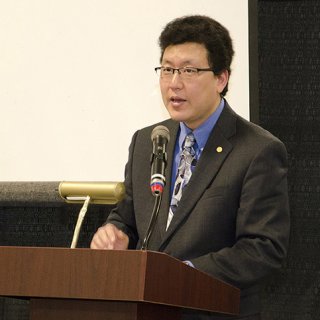National Vehicle and Fuel Emissions Laboratory (NVFEL) Showcase 2012 Highlights
"You are in a place that is really like no other place in America. This is the place that performs all the official US government testing for both fuel economy and emissions. As importantly, the work that happens here by an extraordinary set of people is what helps set common sense, cost-effective, wise emissions regulations for the United States. 
It’s this team of people and the work done at this facility that in large part enabled what can only be described as a historic set of emission standards and new fuel economy standards for the United States… announced by the President earlier this year… ‘As the single largest step the United States has ever taken to reduce greenhouse gas emissions and improve fuel economy.’
It was really a historic undertaking and historic result, not just in terms of the economy, environmental and security results that this new national policy enables, but also importantly in terms of how this policy was developed, in collaboration with the automakers that you see seated up here, in collaboration with non-governmental organizations, in collaboration with three different government agencies, and with labor.
…That is really why we asked you all here today to start seeing the automakers response is to this new national policy. … The story you are going to hear today is that the industry is actually ahead of schedule in terms of where they expect to be in 2016 and in 2025. It is really a great tribute to the commitment of the industry to this extraordinary policy. "
- Christopher Grundler, Director Office of Transportation and Air Quality U.S. Environmental Protection Agency
"Technology innovation is already transforming the automotive market, at a pace that none of us could have predicted just a few years ago…. About 90 current models, representing about one-quarter of all sales, can already meet their 2016 EPA footprint-based GHG emissions targets, assuming fairly straightforward air conditioning improvements, with over half being gasoline and models in almost all vehicle classes. " 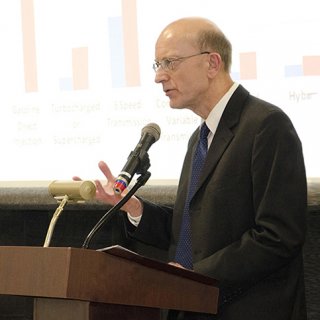
- Jeff Alson, Senior Policy Advisor Office of Transportation and Air Quality U.S. Environmental Protection Agency
"…through 2021, we think that the low hanging fruit, the most cost effective technologies, are really improvements to conventional technologies. We are going to redefine what a conventional vehicle is … there will be continued advances in engines… there will be improvements in transmissions… a lot of road-load improvements… a lot of reduced accessory loads… along with some hybridization. After 2021, we think that we need more electrification, and that is where market signals will be important…. [Honda] will be dedicating 80, 90 if not 100% of the efficiency improvements towards fuel economy." 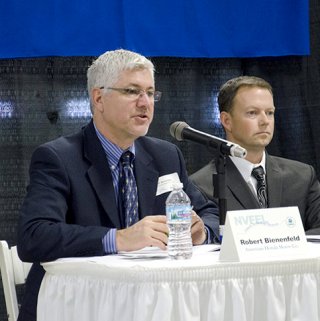
- Robert Bienenfeld, Senior Manager Environment & Energy Strategy American Honda Motor Co., Inc.
"[Manufacturers] can make a lot of cool cars, but if they are not suiting needs of consumers that’s a problem. ...We do our own evaluation of the vehicles and we also look at what the consumer really thinks through surveying. We look into reliability results, satisfaction, and what people are looking for when buying them. This year we conducted a survey, looking at what are the main things people are looking for when they are buying new cars …the number one is fuel economy by a 2:1 margin, we look at other factors like reliability, even safety, fuel economy wins. It is the primary reason why they are actually buying a new car." 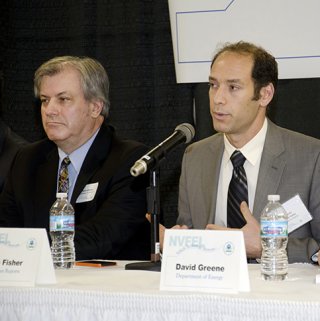
- Jake Fisher, Director of Auto Testing Consumer Reports
"Our strategy [at first] is to focus on efficient fundamentals, on the traditional vehicle and trying to get improvements on aerodynamics, mass reduction, rolling resistance, and getting electrical loads off the vehicle. … we are not going to see history repeat itself, meaning you are not going to see one dominant fuel for the next 100 years like we have seen in the past, its going to be a variety of fuels... incorporating bio-fuels, whether it is ethanol or bio-diesel, then we look at gaseous fuels either CNG or LPG, and then we move into the electrified side of the equation focusing on hybrids, pure electrics, and then eventually moving onto fuel-cell type technologies. " 
- Daniel Frakes, Manager Vehicle Fuels and Advanced Technology Policy
General Motors
"The best evidence points to the fact that consumers undervalue fuel economy by approximately a factor of 2. If you ask auto manufacturers what they think, they will usually tell you that consumers will pay for about 3 years worth of fuel savings and not more than that. 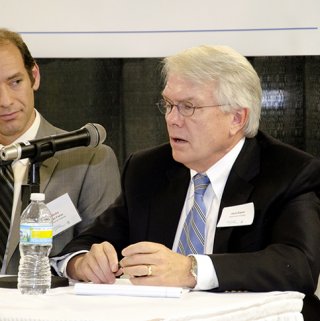
…For what we heard about conventional technologies, since every manufacturer will be adopting these technologies to meet the fuel economy standards, and they are relatively cost-effective, I don’t think we have a consumer acceptance problem.
…But, if [hybrids] are going to cost $2,000-$3,000 more, then I think we have a consumer acceptance problem. We can either say to the manufacturers ‘that’s your problem, you’ll have to subsidize your vehicles’, or we can create a market environment where that makes sense to the consumer."
- David Greene, Corporate Fellow Oak Ridge National Laboratory
Department of Energy
"…We believe that there can be continuous improvements to internal combustion engines. One way that we stand out as somewhat different is that we will continue to develop diesel engines, and we think they will play a role in the future. But also gasoline engines will have a lot of improvements; we are on the pathway to direct injection, downsizing and turbo charging as well, and also improvements in transmission technology as well as the overall vehicle. Moving on from that we think there will be increased hybridization and also pure battery-electric vehicles." 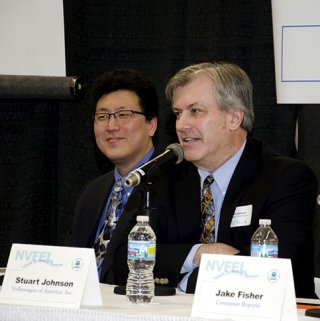
- Stuart Johnson, Manager Engineering and Environmental Office
Volkswagen Group of America, Inc
"If you think about the introduction of our Prius back in 97/98 timeframe to current, we have been pleased with the success of that particular technology, it accounts for about 15-20% of our vehicle line up. … If we sit here today and are talking about 2025 level standards it is roughly equivalent to the same type of timeframe. …at the end of the day the customer has to want to buy this technology, and if we are not successful in achieving the customers’ acceptance of the technology then no one benefits." 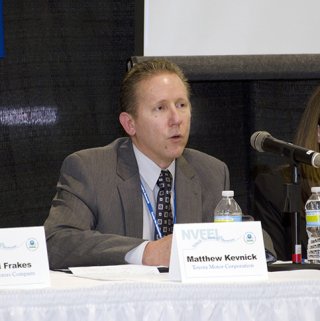
- Matt Kevnick, Senior Principal Engineer
Toyota Motor Engineering & Manufacturing N.A.
"44% of those surveyed [by Ford] believe that fuel efficiency is the most important influencing factor in the vehicle purchasing decision. …Our fuel economy story is based upon what we call the “Power of Choice” - that offering a range of fuel efficient vehicles and technologies is the best way to meet the needs of the customer in the most affordable way possible. We offer a variety of electrified options including hybrid, plug-in hybrid and pure electric vehicles, along with efficient gasoline engine technologies like EcoBoost. …While we do feel that electrification will be an important part of Ford’s future strategy, we believe there is still significant potential to reduce CO2 using advanced technology gasoline engines. Therefore, EcoBoost remains a key part of our long term strategy for powertrains, and by 2013 more than 90% of our North American lineup will be available with an EcoBoost engine including everything from the Fiesta to the F150." 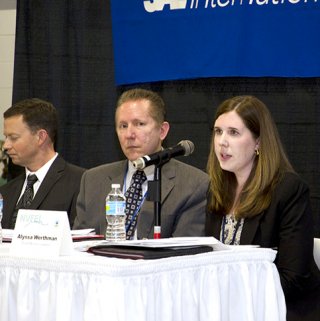
- Alyssa Werthman, Product Environmental Engineer Sustainability and Vehicle Environmental Matters Ford Motor Company
